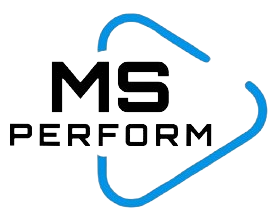Top JavaScript Frameworks for Modern Web Development
JavaScript frameworks have revolutionized web development, offering robust tools and libraries that streamline the process of building dynamic, responsive, and feature rich web applications. Here are some of the top JavaScript frameworks that are highly popular and widely used in modern web development:
React
Overview:
React is a JavaScript library developed by Facebook for building user interfaces, particularly single-page applications. It allows developers to create reusable UI components.
Key Features:
Virtual DOM: Efficiently updates and renders components.
Component-Based Architecture: Promotes reusable and maintainable code.
JSX: Syntax extension that allows mixing HTML with JavaScript.
Strong Community Support: Extensive resources and a vast ecosystem of tools.
Use Cases:
Building complex, high-performance user interfaces.
Developing single-page applications (SPAs).
Creating dynamic web applications.
Angular
Overview:
Angular is a comprehensive framework developed by Google, designed for building dynamic web applications. It uses TypeScript, a superset of JavaScript, which enhances code reliability and scalability.
Key Features:
Two-Way Data Binding: Synchronizes data between model and view.
Dependency Injection: Improves code maintainability and testing.
Component-Based Architecture: Facilitates the creation of modular applications.
Comprehensive Toolset: Includes everything needed for development, from routing to form handling.
Use Cases:
Enterprise-level applications.
Progressive Web Apps (PWAs).
Complex, large-scale web applications.
Vue.js
Overview:
Vue.js is a progressive JavaScript framework for building user interfaces. It is designed to be incrementally adoptable, meaning you can use it for a part of a page or an entire application.
Key Features:
Reactive Data Binding: Automatically updates the view when the data changes.
Component-Based Structure: Encourages code reusability and organization.
Simple Integration: Can be integrated into projects easily.
Rich Ecosystem: Includes tools for state management, routing, and build processes.
Use Cases:
Single-page applications.
Prototyping and small to medium-scale applications.
Enhancing existing applications with dynamic components.
Svelte
Overview:
Svelte is a modern JavaScript framework that shifts much of the work from the browser to the build step, compiling components to highly efficient imperative code.
Key Features:
No Virtual DOM: Directly updates the DOM, leading to faster performance.
Reactive Declarations: Simplifies the management of state.
Small Bundle Size: Reduces load times and improves performance.
Component-Based Architecture: Maintains modularity and reusability.
Use Cases:
High-performance applications.
Projects where bundle size and speed are critical.
Building user interfaces with minimal overhead.
Next.js
Overview:
Next.js is a React framework that provides infrastructure and simple development experience for server-side rendering (SSR) and static site generation (SSG).
Key Features:
Hybrid Rendering: Supports SSR, SSG, and client-side rendering.
Automatic Code Splitting: Optimizes performance by loading only necessary code.
API Routes: Allows building API endpoints within the application.
Built-in CSS and Sass Support: Simplifies styling.
Use Cases:
Server-rendered applications.
Static websites.
E-commerce platforms and content-heavy sites.
Nuxt.js
Overview:
Nuxt.js is a framework built on top of Vue.js, providing a streamlined development experience for SSR and static site generation.
Key Features:
Hybrid Rendering: Supports SSR, SSG, and client-side rendering.
Automatic Code Splitting: Enhances performance by loading necessary components.
Powerful Module System: Extends the framework’s capabilities with ease.
SEO-Friendly: Simplifies the implementation of SEO best practices.
Use Cases:
Server-rendered Vue.js applications.
Static websites.
Content-driven applications.
Ember.js
Overview:
Ember.js is a framework for building ambitious web applications, offering a strong convention-over-configuration philosophy and comprehensive tooling.
Key Features:
Convention Over Configuration: Reduces decision fatigue and enforces best practices.
Two-Way Data Binding: Keeps the model and view in sync.
Ember CLI: Provides a powerful command-line tool for development workflows.
Rich Ecosystem: Includes tools and libraries for routing, state management, and more.
Use Cases:
Large-scale web applications.
Complex single-page applications.
Applications requiring strong conventions and productivity.
Conclusion
Choosing the right JavaScript framework depends on the specific needs and goals of your project. React, Angular, and Vue.js remain the top choices for many developers due to their robust features and community support. However, emerging frameworks like Svelte and Next.js offer unique advantages that can be beneficial for performance-critical and server-rendered applications. Each framework has its strengths, making it essential to evaluate them based on your project requirements and development workflow.


.png)
.png)


